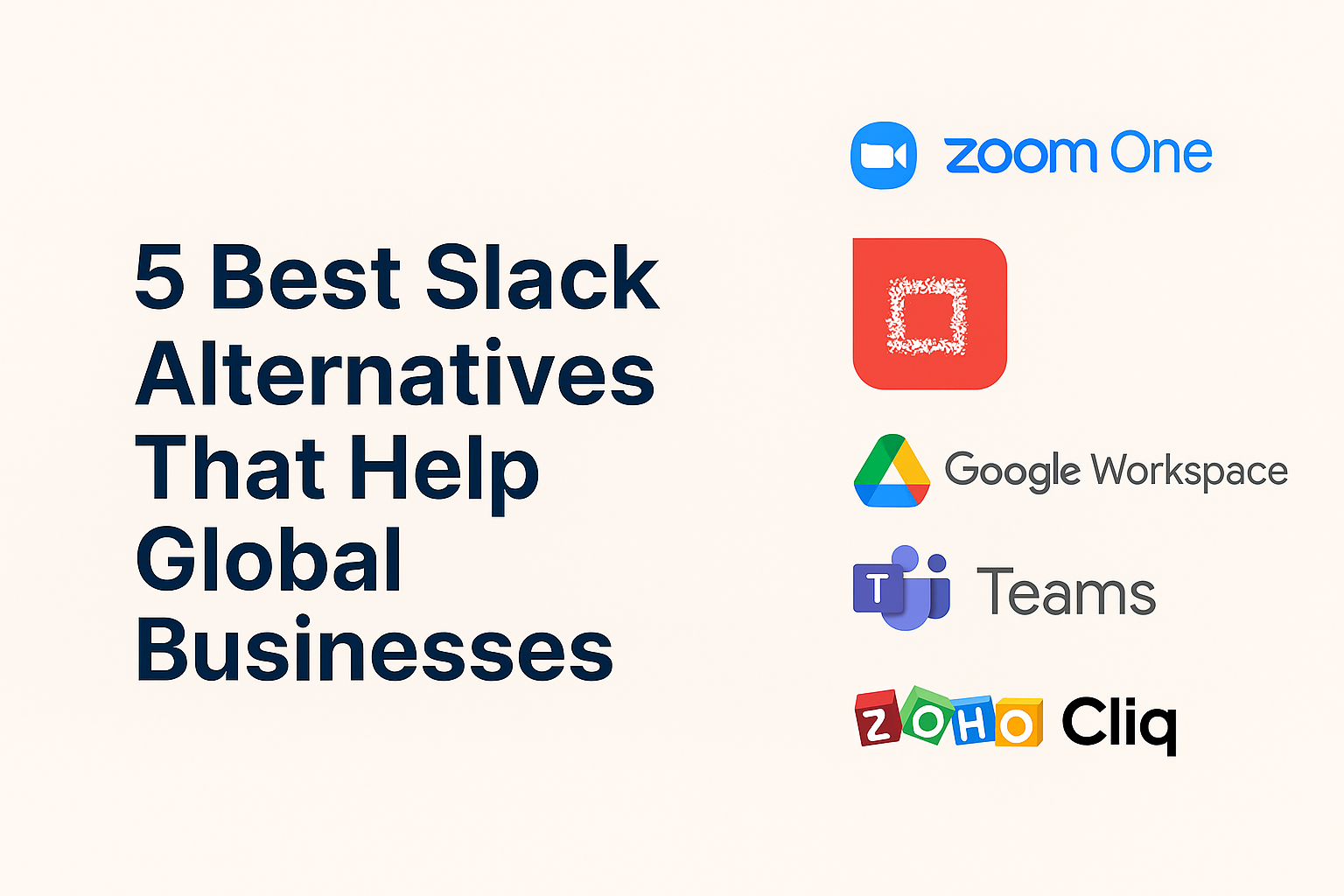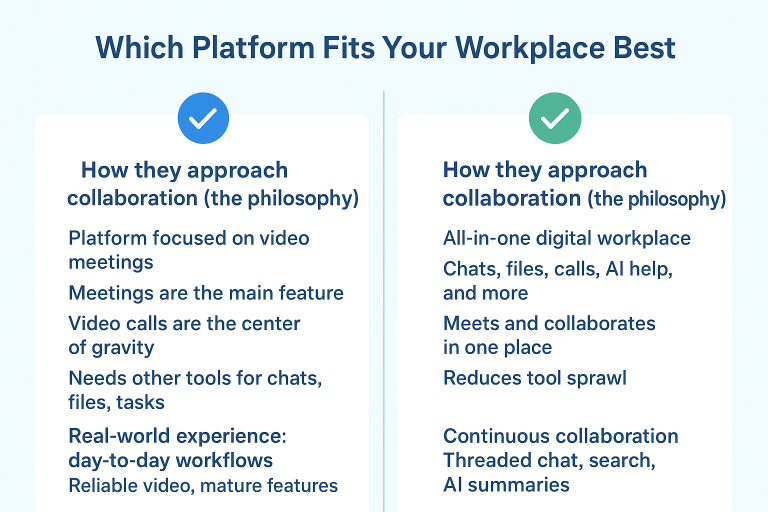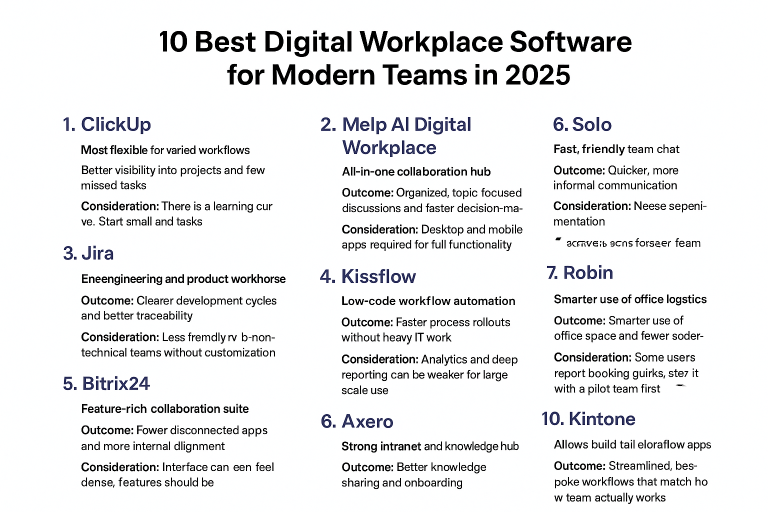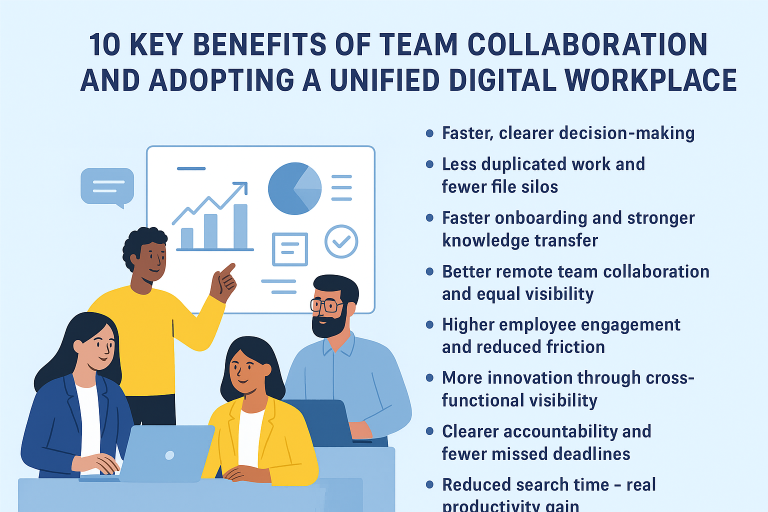Top Alternatives to Slack, Zoom, and Teams: Why Teams Are Looking for Something Better

It’s 9 a.m. and you’re already behind. Slack pings keep piling up, a Zoom meeting left half-summarized on your desktop, and Teams notifications interrupt every two minutes. Thirty minutes later you’ve barely started the work that actually matters. Sound familiar?
That daily scramble is exactly why companies are looking past Slack, Zoom, and Teams for something simpler and more unified. The market has options — from playful voice-first apps to flexible knowledge hubs — but few solve the root problem: fragmentation.
1. Why Teams Look for a Slack Alternative
Slack is a popular team collaboration software, but many teams face some limitations:
- Fragmented communication: Slack is primarily built for chat. For file management, video calls, or task tracking, teams often need to add extra apps.
- Lost messages and threads: In larger teams, important instructions or client messages can get buried in long threads.
- Missing AI productivity tools: Slack lacks built-in AI assistance or real-time translation, which can save time for global or distributed teams.
Conclusion: Teams need a Slack alternative that combines chat, meetings, file collaboration, and AI productivity tools in one platform.
2. Why Teams Look for a Zoom Alternative
Zoom is mainly a video conferencing tool, but it has gaps for everyday team collaboration:
- Separate tools required: Zoom focuses on meetings. Teams need extra apps for chat, file sharing, or project tracking.
- Follow-ups and summaries missing: Meeting notes or summaries must be created manually, which is time-consuming.
- Challenges for global teams: Built-in live translation or AI-assisted features are not available, making it harder for international collaboration.
Conclusion: Teams need a Zoom alternative that offers video calls, AI summaries, chat, and file collaboration in a single platform.
3. Why Teams Look for a Microsoft Teams Alternative
Microsoft Teams aims to provide everything in one platform, but teams often search for alternatives because:
- Overwhelming interface: Too many features can confuse new users and reduce usability.
- Fragmented workflows: Chat, files, and meetings exist in one app but can feel complicated to manage efficiently.
- Limited AI assistance: Automatic message drafting, translation, or meeting summaries are not fully integrated.
Conclusion: Teams need an alternative that provides organized topics, AI-powered chat, live translations, file editing, and seamless meetings in one cohesive platform.
Here’s a practical look at four realistic alternatives, and why Melp AI Digital Workplace Software is positioned as the most complete solution.
1) Discord for Teams
Overview: Once a gamer hangout, Discord now attracts creative and small professional teams with always-on voice channels and topic-based chats.
A day in the life: A small design shop kept a persistent voice channel open all day so designers could riff in real time. It felt instant and informal — great for quick back-and-forth. But when the team needed to find a client instruction from two days earlier, the casual stream of messages made the search painful. Important items get buried under memes and file dumps.
Strengths: Familiar UI, free, great for spontaneous voice/video collaboration.
Limitations: Poor file organization and scaling issues; lacks native AI assistance and structured workflows.
Bottom line: Fun and fast for small creative teams — less fit for groups that need reliable structure and accountability.
2) Notion
Overview: Notion excels at bringing together notes, databases, and project plans into one flexible workspace.
A day in the life: A product launch lived in Notion: specs, timelines, and asset links were well organized. But when someone in another timezone needed a quick translation or a meeting summary, they had to wait — Notion doesn’t handle live chat or AI meeting recaps. Teams often layer chat and video tools on top of it, which reintroduces fragmentation.
Strengths: Powerful organization and documentation; highly customizable.
Limitations: No integrated real-time chat or AI-driven meeting help; requires external apps for live collaboration.
Bottom line: Brilliant for project organization — not a full replacement for real-time collaboration tools.
3) Melp AI Digital Workplace – Melp App
Overview: Melp AI Digital Workplace combines messaging, meetings, file collaboration, and AI assistance in one all-in-one platform, addressing the fragmentation teams face with Slack, Zoom, and Teams.
A day in the life: The marketing team opens their “Marketing” space in Melp and immediately sees everything by topic: campaign briefs, meeting notes, and attachments. A teammate types a question in Spanish and gets an instant translated reply. A junior drafts a client update and uses “AI Draft For Me” to polish it into a clean, professional message. During the video call, smart features (noise suppression, face-centering, breakout rooms, live polls) keep the meeting focused. When the meeting ends, Melp’s AI sends a concise summary and action items to attendees. Documents are edited in-place with version control handled automatically — no chasing attachments across drives.
Strengths:
- Clear hierarchy: Teams → Topics → Groups keeps conversations organized.
- Built-in AI: drafting, translation, automatic meeting summaries.
- Full-suite collaboration: Docs, Sheets, Presentations integrated with chat and meetings.
- Video features: breakout rooms, live polls, noise suppression, virtual backgrounds.
Limitations: A short onboarding helps new users get the most from advanced AI features; very small teams may not need the full feature set.
Bottom line: Melp app brings chat, meetings, files, and AI together so teams stop switching apps and start doing actual work.
4) Flock
Overview: Flock bundles chat, video calls, and lightweight productivity features for small teams.
A day in the life: The platform gets a consulting firm started quickly — polls and to-dos are easy to use. But as the firm expands globally, missing AI features and limited file capabilities force them to add third-party apps.
Strengths: Simple, affordable, easy to adopt.
Limitations: Limited AI and translation tools; not ideal for global scale.
Bottom line: Good for straightforward, small-team workflows — limited when your needs grow.
Why teams switch
Slack is great at chat but needs add-ons for meetings and files. Zoom is a meeting powerhouse but doesn’t manage workstreams. Teams tries to do everything, and sometimes ends up overwhelming users. Each added app or integration means more context switching — and that’s where productivity leaks out.
Why Melp matters
Melp’s pitch is simple: reduce app-switching by making communication, meetings, docs, and AI assistance live together. For teams tired of toggling tabs, that promise translates into minutes saved every day, fewer missed action items, and clearer handoffs. Melp, the all-in-one AI digital workplace, is emerging as the solution teams want. It keeps work flowing, makes collaboration seamless, and saves time on repetitive tasks.
Final thought
At True Workplace, we believe tools shape how teams spend their time. Slack, Zoom, and Teams are powerful, but they don’t eliminate fragmentation. Alternatives like Discord, Notion, and Flock solve parts of the problem — yet Melp intends to solve the whole thing. Less app-hopping, fewer lost notes, and better outcomes. That’s the kind of platform teams actually enjoy using.That’s the kind of platform teams actually enjoy using — a true digital workplace software.






